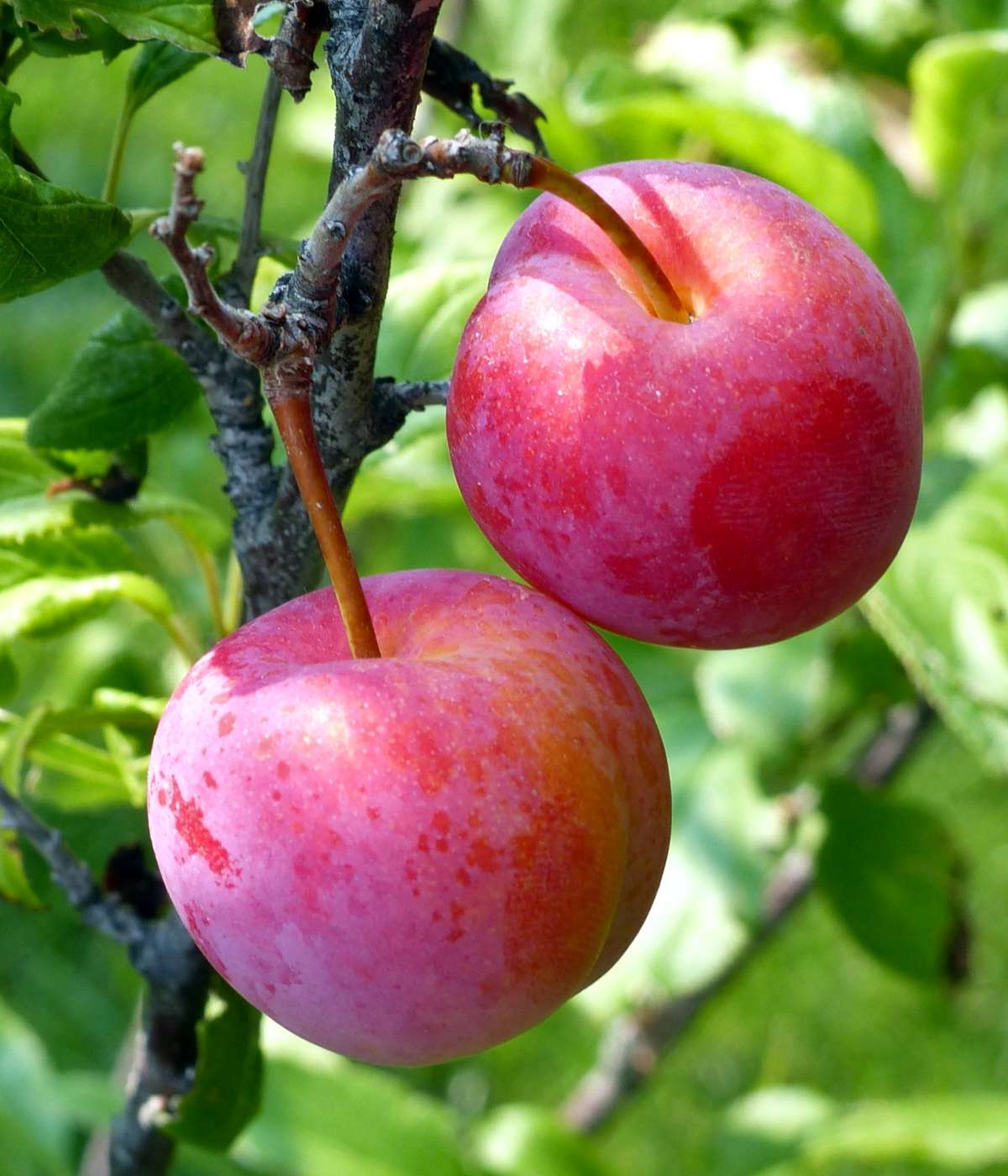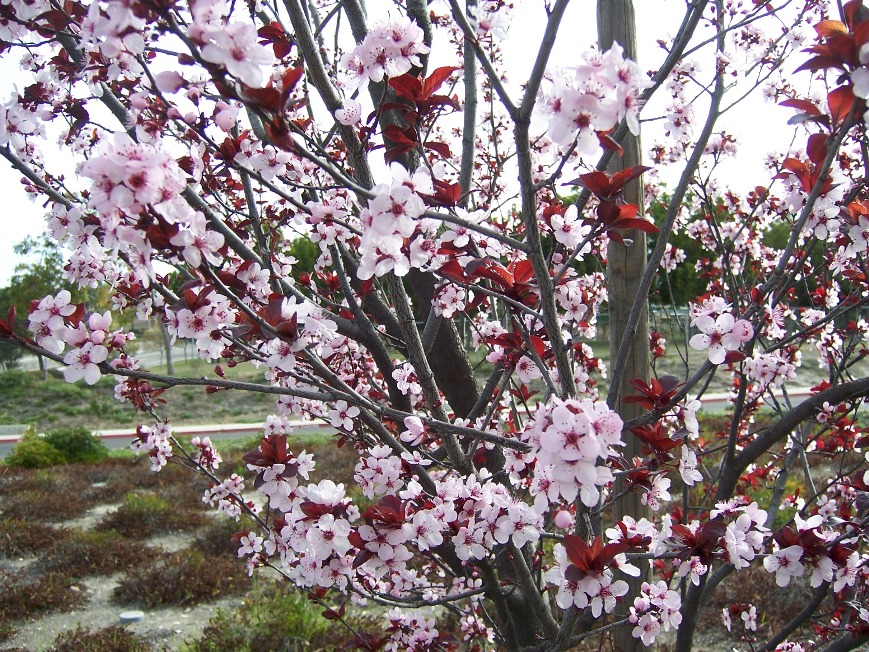
How Do Red Plums TasteĪ tart flavor or sour tinge characterizes most red plums. Both have been known to humans for at least 1,000 years. The history of the red plum varies wildly based on whether it is a Japanese plum or one of the plums native to North American. Know though that when you purchase something called a red plum, you are most likely purchasing a Methley plum or other Japanese red plum. Regardless of the use of the term, red plum encompasses a selection of plums with overlapping physical characteristics. Most varieties belong to a group of Japanese plums, Prunus salycina. You will also find them labeled as red plums in stores. The Methley, Bruce, and Burbank all meet this description.
#Red leaf flowering plum tree skin
Second, the term ‘red plum’ describes any plum cultivar that has a red-toned skin and yellow-ish flesh. The Prunus nigra is more commonly known as the Canada plum or the red plum. Together, these types of plums are often called wild plums.

The Prunus americana is more commonly known as the American plum, Marshall’s sweet yellow plum, or the wild plum. They are the Prunus americana and the Prunus nigra. First, it can be used to describe the two native North American plums. The term ‘red plum’ is used in two primary ways. Read on to learn about those red plums you see in stores and what you are actually buying. It is also a description that can have a couple of meanings. How is it possible to read about plums like the Methley and Bruce but only find something as tame as a red plum? Believe it or not, you are might just be buying a Methley or Bruce plum as they are popular red plum varieties. We on this site talk about all the fantastic and exotic types of plums out there, so it can be baffling to go to grocery store after grocery store and see exactly two types: red and black. In nature, however, competition between wolves and poodles would be a bit one-sided.Red plums and red plum trees are actually canopy terms that encompass many specific plum cultivars. Humans select for dogs, and up until recently, even tried to exterminate wolves.

A more familiar analogy would be asking why poodles and other domestic dog breeds persist in a world where there are wolves. There is another reason red-leafed trees stick around despite a competitive disadvantage: humans like them! Humans select red-leafed trees as ornamentals and ensure their continued spread. In fact, when purple leaf plum trees are planted in the shade, the leaves will be green rather than purple. At low light levels, however, red-leafed trees are at a disadvantage. At high light levels, the red anthocyanins may even offer some protection from harsh ultraviolet light.

You would think that a red-leafed tree would be at a significant disadvantage in competition with green-leafed trees, but as it turns out, at high light levels there is not much of a difference in photosynthesis rates since the red-leafed trees do contain chlorophyll. Another pigment called anthocyanin is not involved in photosynthesis but gives stems, leaves, and fruits a red color. These carotenoids give us the fall colors when the chlorophyll is broken down by the tree. There are accessory pigments called carotenoids that absorb some of the blue light that chlorophyll misses, which give them the colors yellow, red, or orange.


 0 kommentar(er)
0 kommentar(er)
